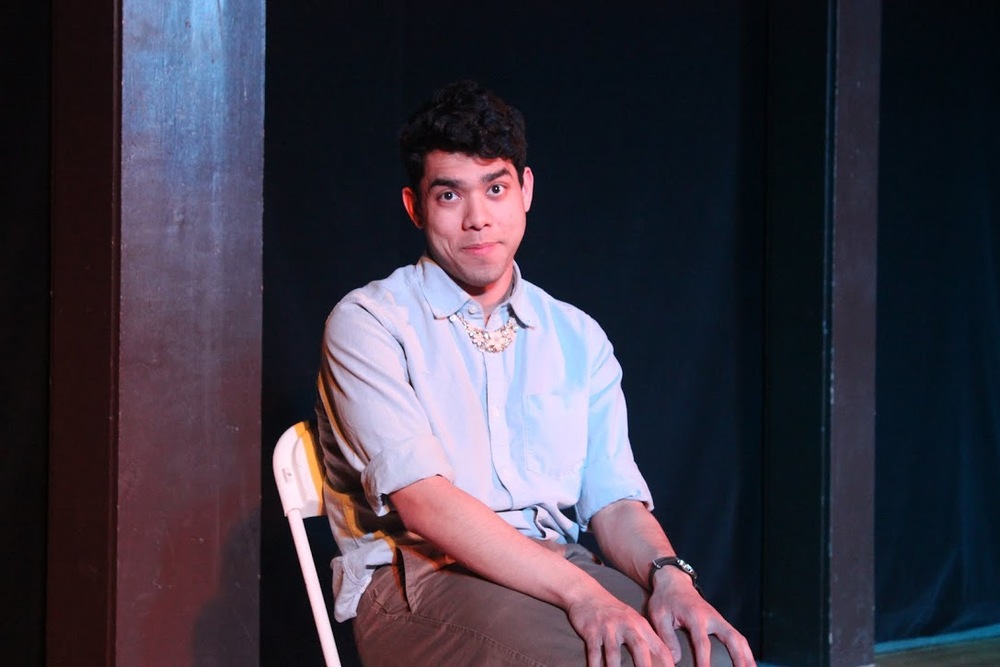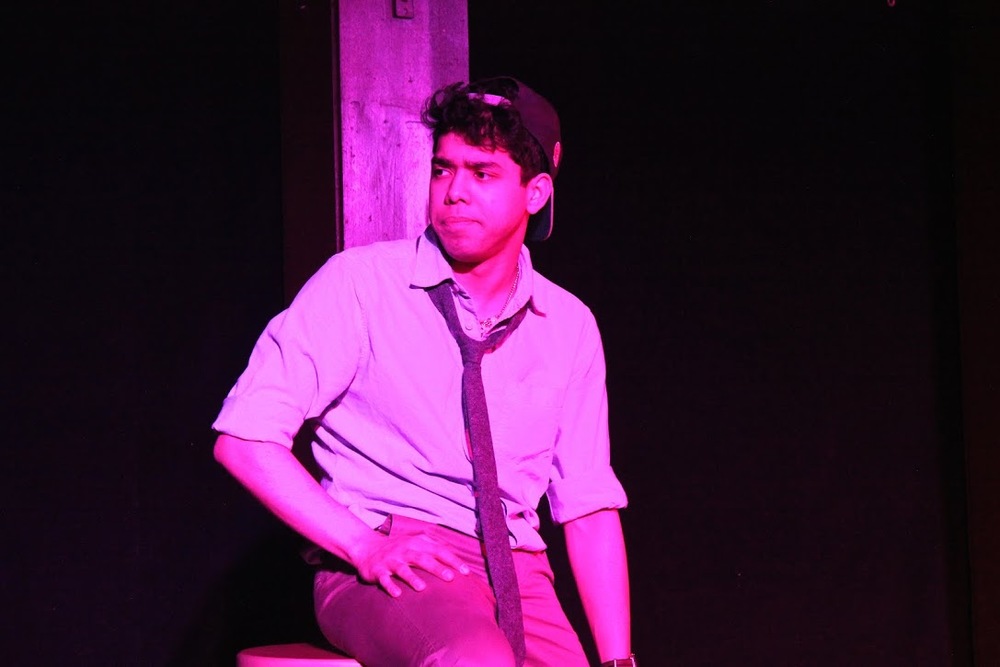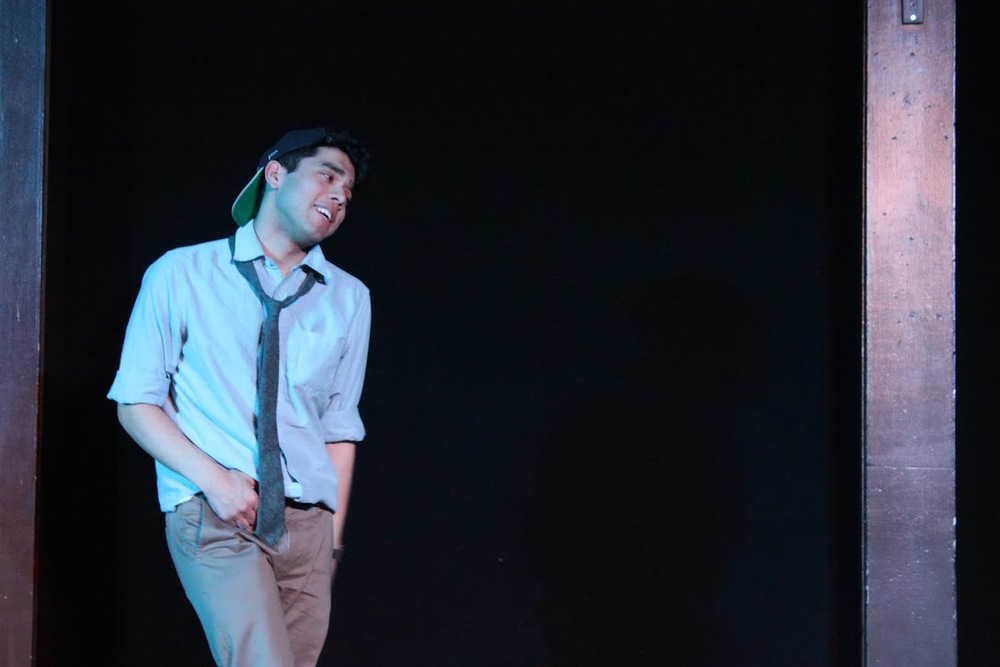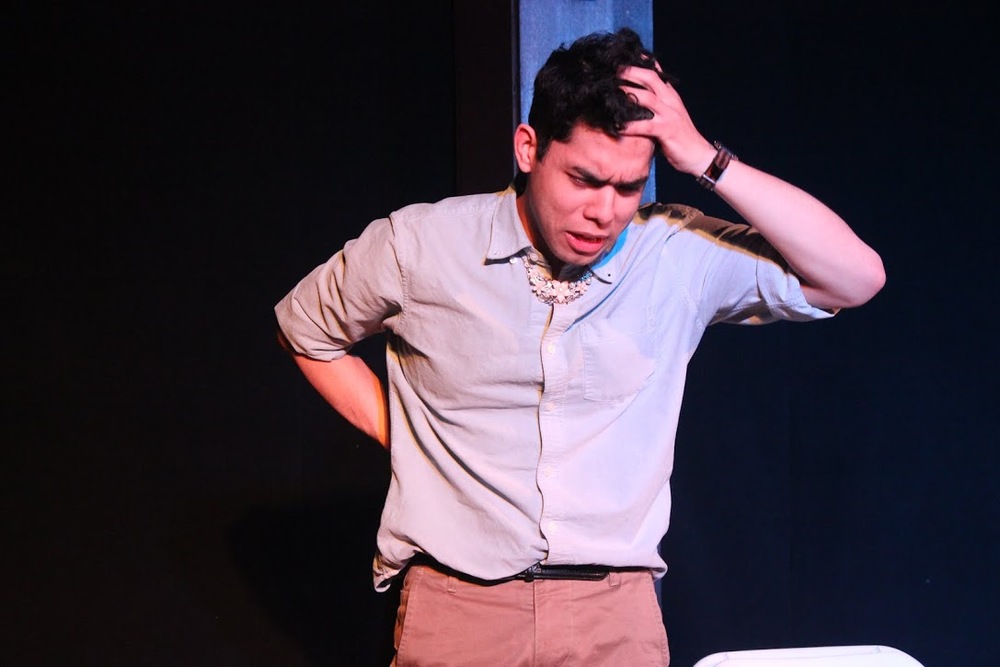
Jonathan Lee-Rey ’15
The World Outside the Elevator
By: Giorgos Petkakis ’18
What do a widower, a 7-year-old girl, and a grade school teacher all have in common? Although it may sound like the opening line of a potentially bad joke, this arrangement of characters were in fact the springboard for a different kind of comedy. This semester, Jonathan Lee-Rey ’15 presented his senior project, Hotel Anello, a relatively short and light-hearted series of interlocking stories concerning a range of different characters working and living in a hotel. Hotel Anello was presented at Falstaff’s—Skidmore’s student performance center—and was structured in a similar fashion as a longform improvised comedy show. With the guidance of director Hannah Baker ’16 and assistance of stage manager Amanda Corey ’17, Jonathan devised his one-man show using anonymous suggestions from students of the Theater Department, which he collected during the beginning of the semester. These suggestions were then brought to life through Lee-Rey’s characters, who were in turn placed into the world of Hotel Anello.

Jonathan Lee-Rey ’15
Speaking about the rehearsal process, Lee-Rey and Baker agree that there was a particularly strong emphasis on the creation and development of these characters—particularly in making each of the characters stand out from the others, as well as established character stereotypes. “Jon would try out an improvisation, and I would tell him what worked and what didn’t. My job was to paint each scene appropriately for an audience,” says Baker. “We would stretch each character to their extreme to see how far we could go with them. Some of them even stayed that way,” she adds.
However, even after every character had been fully scripted and integrated into the play, the world around them remained completely empty. Without a set to support him, Lee-Rey had to rely on his own acting to create a big part of the world that surrounded him. “There is only so much that one actor can do when it comes to creating an entire world,” he admits. Responsible for filling some of these gaps and populating that world was lighting and sound designer Max Helburn ’18. His design was mostly based on atmosphere and ambience, which were used to rapidly interchange between locations and characters.

Jonathan Lee-Rey ’15
When asked what was the most challenging yet essential part of the process, Lee-Rey, Baker, and Helburn all concurred that it was the need to keep everything in the blocking and design as specific as possible. “I had to keep track of everything I was doing on stage; I had to keep track of furniture, other people and even that the object I picked up returned to their original spot,” Lee-Rey elaborates. Given that almost none of those objects physically existed, it is no surprise that this was a particularly challenging concept to grasp and coordinate without any miscommunication toward the audience. “It was decided from the beginning we did not want this to feel like pantomime—we wanted the other characters to feel as real as Jon was,” Baker states.
As a conclusion to his studies at the Skidmore Department of Theater, Hotel Anello seems to have done justice to both Jonathan’s extensive contribution to this department, as well as his artistic and comedic vision. At the end of the play every character’s story is resolved—or to put it in his own words “tied with a pretty bow.”

Jonathan Lee-Rey ’15
This article originally appeared in print in the Spring 2015 issue of the Skidmore Theater Newsletter.
